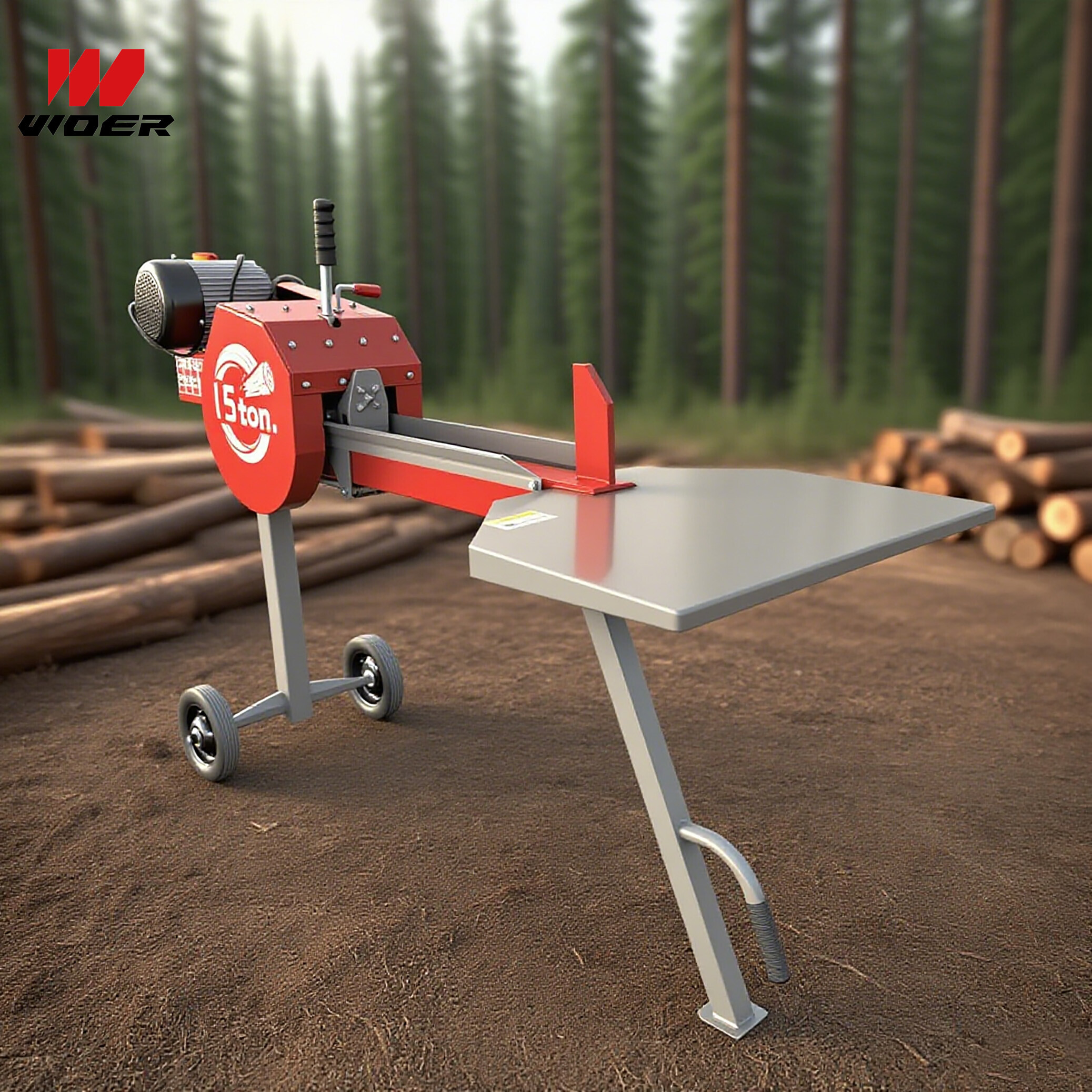Navigation
Contact us
Phone
Message

This exhibition preview highlights the latest kinetic log splitter innovations alongside advances in log splitter hydraulic, electric, and gasoline technologies. Buyers, operators and technical evaluators will find concise comparisons, performance insights and procurement guidance for wood log splitter solutions.
What is a Kinetic Log Splitter and Why It Matters
Kinetic log splitters store energy in a flywheel and release it in a rapid stroke, producing high-speed, repeatable splitting action. Unlike traditional hydraulic log splitter systems that rely on slow, high-force pushes, the kinetic approach delivers a short, powerful impact that reduces cycle time and improves productivity for many wood processing tasks. For operators evaluating options, the kinetic log splitter presents a strong case where throughput and low maintenance are priorities.
Core advantages
- Fast cycle times with fewer moving hydraulic parts.
- Lower operating fluid contamination risk and simpler maintenance compared with complex hydraulic systems.
- Often lighter and more compact, enabling easier transport and integration into mobile setups.
Exhibition Highlights: New Features and Innovations
This season’s exhibits emphasize hybrid control systems, adjustable kinetic energy profiles, and improved safety guards. R&D showcased intelligent drive electronics for electric and log splitter electric models, advanced flywheel materials to extend service life, and modular designs for vertical log splitter and horizontal configurations. Attendees can expect demonstrations showing how kinetic systems outperform traditional hydraulic log splitter units in short-cycle scenarios.
Notable technological developments
- Adaptive energy modulation — fine-tune strike energy to wood species and moisture content.
- Integrated diagnostics — sensors that monitor flywheel balance, torque and component wear to reduce downtime.
- Cleaner electric drives — electric log splitter variants with battery or mains power for low-emission sites.
Comparative Analysis: Kinetic vs Hydraulic vs Electric vs Gasoline
Technical evaluators and procurement teams benefit from clear metrics. Below is a concise comparison table to guide decision-making when choosing between kinetic, hydraulic log splitter, electric log splitter and log splitter gasoline models.
Application Scenarios and Use Recommendations
For commercial wood yards handling varied species and sizes, a kinetic log splitter often maximizes throughput while reducing hydraulic-fluid related downtime. In contrast, hydraulic log splitter systems remain the go-to for jobs requiring sustained high force, such as splitting dense hardwoods or oversized rounds. Electric log splitter units are ideal for low-emission or indoor operations where noise and fumes must be minimized, and log splitter gasoline models serve remote or mobile operations well.
Operator guidance
Operators should match splitter stroke and wedge geometry to typical log diameters. Regular checks of flywheel balance, belts and bearings for kinetic models, and hydraulic oil condition and filtration for hydraulic units, significantly extend service intervals and reduce lifecycle cost.
Standards, Safety and Testing
Manufacturers often test to international standards (for example, EN safety directives, relevant ASTM components for material testing, and ISO machinery safety principles) to validate performance and protect users. Safety interlocks, two-handed controls and blade guards are important for compliance and insurance acceptance. Technical teams should request test reports that reference recognized standards during procurement.
Quality assurance and QA checkpoints
- Material traceability and weld inspection reports.
- Fatigue testing of flywheel and drive components.
- Hydraulic system leak and contamination certificates.
Cost, ROI and Procurement Considerations
Decision-makers must balance capital expense against throughput, downtime risk and operating cost. Kinetic systems often offer a faster return on investment where labor is a limiting factor. For budget-constrained purchases, the market also lists options marketed as log splitter for sale cheap — due diligence is crucial: verify warranty, spare parts availability and documented cycle life before selecting a low-cost supplier.
Key procurement checklist
- Confirm duty cycle and expected throughput (logs per hour).
- Request actual performance test data under representative wood conditions.
- Verify spare parts lead times and service network.
- Check compliance certificates and maintenance schedules.
Common Misconceptions and FAQs
Misconception: "Hydraulic is always stronger." Reality: While hydraulic systems offer steady high force, kinetic splitters deliver impactful energy that can be more effective for many real-world splitting tasks and may require less maintenance. Question: "Are vertical log splitter models better for large logs?" Answer: Vertical log splitter formats ease handling of tall rounds; choose according to ergonomic and throughput needs.
Why Choose Us and Next Steps
We combine hands-on experience in timber processing equipment, documented testing protocols and global sourcing expertise to support procurement and lifecycle planning. For hands-on demonstrations, specification packs, or tailored ROI models, request a consultation. For product information or to schedule a demo, see our reference listing 无 which will be updated with exhibition-specific offers and technical sheets.
Contact our team to discuss a trial unit, site assessment or financing options. For technical evaluations, we provide on-site performance testing aligned with EN and ASTM practices to help you validate claims before approval.
Closing Summary
Exhibits this cycle make clear: kinetic log splitter technology has matured into a compelling alternative alongside established hydraulic, electric and log splitter gasoline options. For decision-makers ranging from operators to CFOs, the right choice depends on throughput needs, site constraints and total cost of ownership. Use the guidance above to prioritize testing criteria and to build a procurement specification that aligns with operational goals.

This stunning beach house property is a true oasis, nestled in a serene coastal community with direct access to the beach.
Contact
West Street, Melbourne Victoria 3000 Australia